All opinions expressed here are strictly my own. Find me on Instagram, TikTok and Bluesky. I’d also love it if you shared this letter with a friend.
Later this summer, I am hoping to run an extra edition of Ultracold answering some reader questions about physics, science writing and science journalism. If you have questions along those lines please email them to ultracold.newsletter@gmail.com
MEDIA/DIET JULY 2025
Thanks for reading my newsletter! This is a monthly edition of Ultracold where I share informal thoughts on media and food that I have consumed recently. A more polished longform piece will run on the 28th.
MEDIA
When you grow up in a town of 1200 people you learn that there is at most two of everything - two hair salons, two supermarkets, two gelato stores, and so on. But when the library opened in my small Croatian town just a few years after I started middle school, it was distinctly one of one. It had a complicated backstory involving the local plastics refinery and disappearing American investors, but all I knew as a teen was that it had books. To streamline my hunger for stories, my parents and the librarian agreed that I should start tackling the library’s catalogue by reading books by Agatha Christie. The librarian deemed them age appropriate and my dad remembered them fondly from both his reading youth and endless TV movies that were always playing on Croatian channels. Immediately, I was hooked.
I won a reading award in my age group that summer and a few summers later when my mom figured out how to bind blank books at home I attempted writing my own crime story following Christie’s formula. I lacked both patience and imagination to finish it, and my reading interests soon turned to the genre of science fiction instead. But the beats of Christie’s stories are still part of my DNA as a media consumer, and I subconsciously look for them in anything crime related. Steven Soderbergh’s Black Bag, released earlier this year, falls squarely into this category - and uses this familiar form to deliver a story that is about more than spies and secrets.
Michael Fassbender and Cate Blanchette play George and Kathryn, a couple of spies happily employed at some British intelligence agency and happily married. Their marriage is not just so stable that other characters keep remarking on it, but also filled with wealth, elegance and passion. Fassbender and Blanchette are, after all, both beautiful, and though the film tasks them with somewhat cartoonish and overly mannered performances, they have lots of on-screen chemistry. The plot of Black Bag is set in motion by a revelation that there is a mole at the agency and, predictably, one spouse is asked to investigate the other as a potential traitor. Here, the film is referencing John le Carré more than it is borrowing from Mr. and Mrs. Smith as what ensues is packed with awkward conversations a lot more than action setpieces.
George, Kathryn and several of their co-workers, all possible culprits in the messy mole business, shine bright within a microcosm of players making moves in a very dry, very British game of emotional chess that involves, among other things, heartbreak and the possibility of melting nuclear reactors abroad. As is often the case with Soderbergh’s films, everything is deliberate, fast-paced and, above all, slick. The color scheme of every shot is perfect, every bit of dialogue is so witty as to straddle the edge of believability, everyone is costumed perfectly, and no-one ever loses sight of exactly what archetype they are playing. There is a flatness to the film, almost like it’s a fashion glossy come to life, but Black Bag capitalizes on the familiarity of its plot’s structure to feel propelling.
Black Bag is also really funny and really farcical when it needs to be, and its ultimate plot is almost less important than the enjoyment of well-done genre-specific scenes, such as a polygraph test and a satellite hack gone awry. It’s hard to get emotionally invested in the film’s characters because they are, well, very much characters and not real people, but most are still afforded a moment when they can strike some emotionally raw and resonant note. The film ends almost as if it were the closing shot of a vintage spy TV show, maybe the original Mission: Impossible but with silkier pajamas and a little more moneyed domesticity.
Notably, what Black Bag offers instead of feats of athletic spycraft, are two pivotal scenes that are deeply indebted to Christie. Her books that feature the Belgian detective Hercule Poirot were always my favorite, and each of them ends with Poirot, himself something of a caricature, assembling all other characters, laying out the details of the crime, and ultimately revealing the culprit. Christie is masterful at this, with each of these intellectual showdowns being immensely satisfying even when you know it’s coming.
Black Bag also ends with all of the characters around a table with the Poirot stand-in breaking down the case until the perpetrator reveals themselves, and it starts with the same cast attending a dinner party. That first dinner scene introduces all of the characters that later prove important for the film and here they all do a lof of exposition and confessing of their own. This is because they don’t know that their food, a sumptuous-looking chana masala, has been dosed with a truth serum of sorts, which is meant to aid the mole investigation. I enjoyed this scene as a fun riff on Christie, especially as much of the dialogue is a lot more vulgar than what would make it into one of her books. When the cast reassembled around the same dinner table, now without the masala, it again effectively conveyed that resolution is absolutely coming.
Maybe my childhood memories put the bar at an overly high setting, but the breakdown of Black Bag’s plot underwhelmed me. But I still found the use of the set-up to be clever, using genre conventions, as is often the case, to tell a story that is actually about a lot more than just solving a case. Christie’s books did this too as so many of her plots hinged on characters that were driven by either love or socioeconomic class. Her stories were never as dirty as what Soderbergh pulls off here, and his final dinner table scene does include cold-blooded murder instead of calling the police. Black Bag is also a lot less interested in class tension. It is populated by the rich, each of them living in an incredibly large apartment with obscenely many windows and not an ounce of dust. In one scene, Kathryn threatens to take the job of a superior who told her that her marriage is a weakness, there is also no labor politics here. This oversimplification, that glossy flattening, ends up highlighting the theme that Soderbergh and Christie share: what about love?
In one scene, Marisa Abela, another spy, ventriloquizes this. “If I date someone outside the community, they don't understand, and they don't have any clearance, so I can't talk about anything. And if I date someone inside the community, I don't trust them, because they're liars, and so am I,” she says. The title of the film refers to these lies as well because “black bag” is a code word for secrets that the two spouses, George and Kathyrn, cannot share with each other. So, there is wealth and there is power, but there are also secrets in the couple’s world, and for a portion of the movie you can’t avoid asking yourself whether even these cartoonishly slick people can emerge from the mix as a stable unit.
Just like every couple in the movie, George and Kathryn get to keep secrets from each other, but once the conspiracy at the film’s centre really heats up, it becomes clear that they are different. Black Bag’s deeply romantic streak reveals itself when the two turn to each other for help, only briefly dwelling on how they may have been suspicious of the other one just a moment ago. For its final act, the movie grants them both with rose-tinted glasses that almost belong in the high point of a 90s rom com. What they have hidden in the black bag in the end matters a lot less than just how loyal they are to their bond.
Tellingly, every other character in the film speaks about sex rather crassly, but they do not actually get to have it, nor even tease it for the audience. The two protagonists, however, fall into bed more than once. Their clothes never come off, and the way their bodies move against each other is more theatrical than raw, but the heat between them is real, burning at its hottest as they promise to always have each other’s back, no matter what. Where Black Bag fails as a piece of Christie-esque intrigue thanks to the villains revealed at its end not being fleshed out enough to be truly exciting or surprising, it does well as an idealistic, pie-in-the-sky romance story.
Once I stopped watching it with the eyes of that library-obsessed kid and tried to put on my hat as a person who has been in a decade-long dedicated relationship, which did eventually become marriage, I softened on its imperfections. A story of a marriage deeply unperturbed by threats as dramatic as treason or potential of deathly harm is, of course, a fairytale, but Soderbergh and screenwriter David Koepp leverage the nearly magical world of spies to make it harder to dismiss, to make it enjoyable even. It’s a clever sleight of hand, one that Christie, who did write novels more concerned that her daughter described as “bitter-sweet stories about love," under a pen name, may have possibly approved of.
DIET

Though I am from a warm place, summers in New York get to me a lot more than any summer on the coast of the Adriatic that I can remember. Most of what we ate to stay cool back home on the island of Krk were watermelons and, later in the summer, my grandfather’s generously juicy tomatoes. Because I was not the one standing over the warm oven or stove I was also happy to eat pasta, various roasts and stews, even chicken that my nonna heroically fried at the top of any July or August Sunday. Maybe it’s because I didn’t inherit enough of her genes, but recently whenever the summer heat has really hit, I’ve skewed towards pulling things out the fridge instead of reaching for a frying pan. One hero of my summertime fridge is silken tofu.
In its firm or extra firm varieties, silken tofu is sturdy enough to withstand being marinated and not completely disappear when mixed into salads, but also mousse or flan-like in a way that makes it a very satisfying cold, cloudy and neutral canvas for all sorts of dressings and sauces. At my laziest, I mix it with lettuce, chopped cucumbers, olive oil, red wine vinegar, salt and nutritional yeast then eat the mixture, partly dressed by the tofu and partly studded by it, with bread and a dip like ajvar.
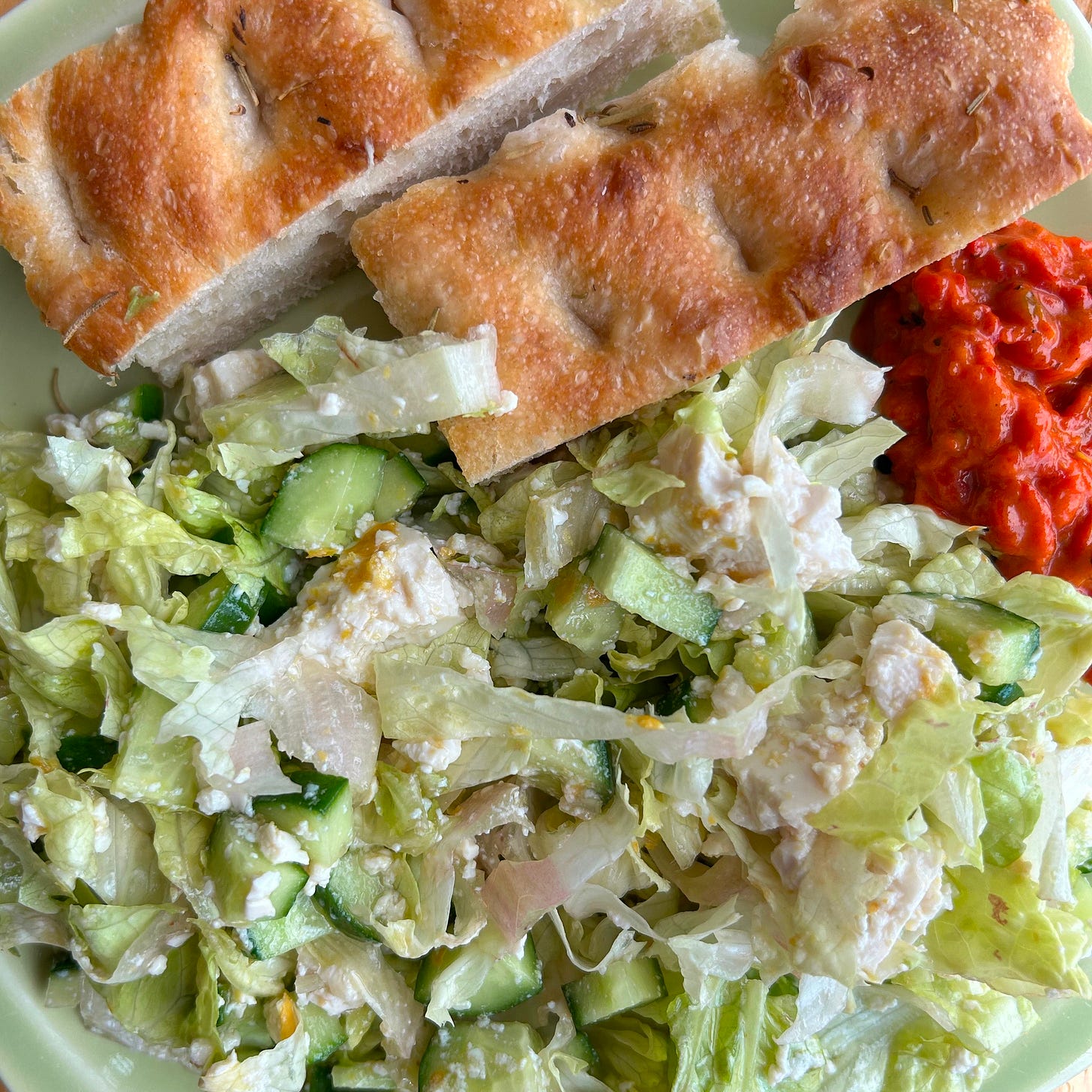
If there is a cooler day, or at least an evening when I am more cool-headed, and I do find it in me to roast or sauté some vegetables, be they beets, bok choy, celery, green beans or carrots, the next day I will happily eat them cold alongside a pile of silken tofu and on top of some rice. Sesame oil, rice vinegar, and sesame seeds are my most standard tofu toppings of choice, but the options are really much broader, from tahini-based dressings to balsamic reductions to hoisin sauce or just a generous drizzle of chili oil.
In the absence of roasted or fried vegetables, chopped up cucumbers or radishes get the job done too, as does kale massaged with something acidic, like lemon juice, and a generous amount of salt. The first New Scientist office that I worked in was near an H-Mart which allowed me to eat countless lunches assembled following a simple rice-greens/veggies-tofu formula: a bowl of rice (microwavable in the office kitchen), silken tofu dressed with sesame oil, furikake and tamari (always stashed in my desk) and some seaweed salad (eagerly bought at the store).
At home, when it’s dinner time and I’m feeling fancy, I slice the silken tofu into neat slabs and pile vegetables on top of it before dousing it all in dressing, or lay them out on a platter in an alternating pattern with tomato slices then drizzle good olive oil and balsamic vinegar over the whole thing. Add a big basket of crusty bread or a few bowls of rice or some cold noodles lightly dressed with sesame oil and you have a low effort, heat-friendly meal that looks good and feels worthy of a luxurious picnic. And if you happen to hate the texture of silken tofu, I’ve often blended it into a dip or even dressing for a summery pasta salad without much of a recipe, just adding lemon juice or apple cider vinegar, olive oil, salt, and nutritional yeast to taste. Silken tofu is such a summertime power player for me, and I stock up on it the second I also, begrudgingly, decide to turn on the air conditioner.

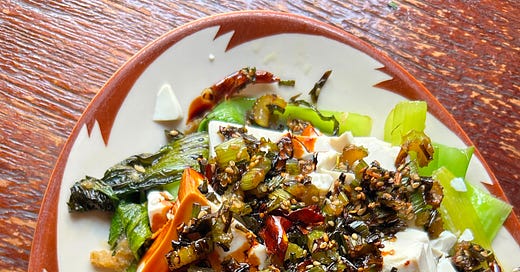

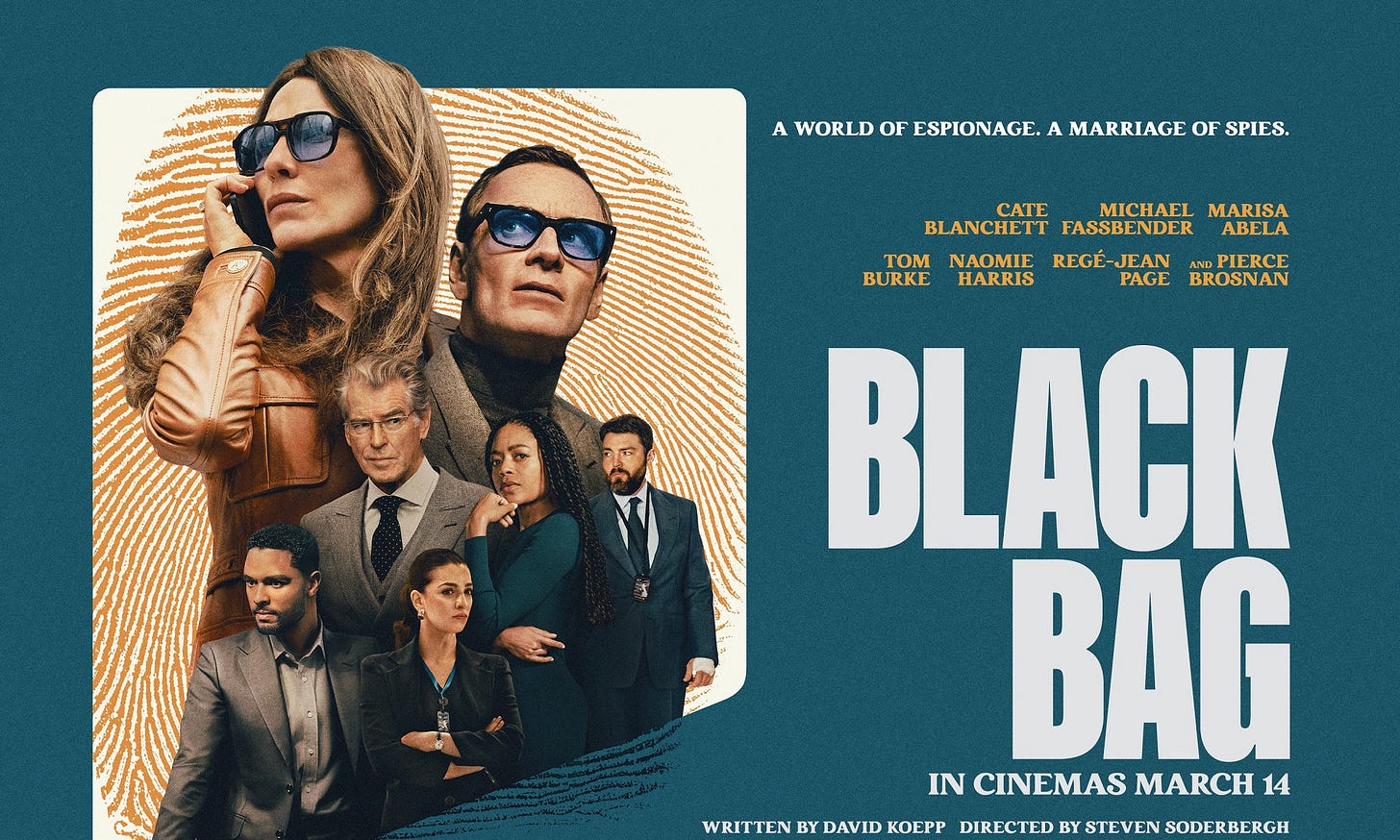
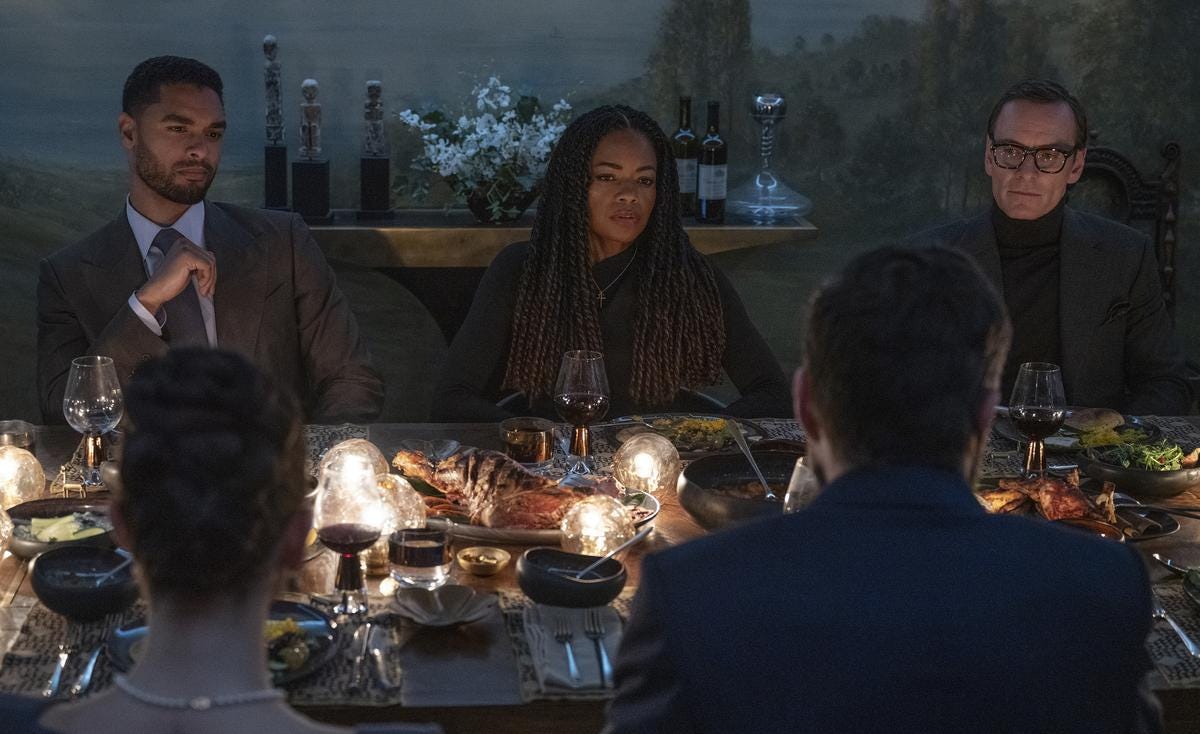
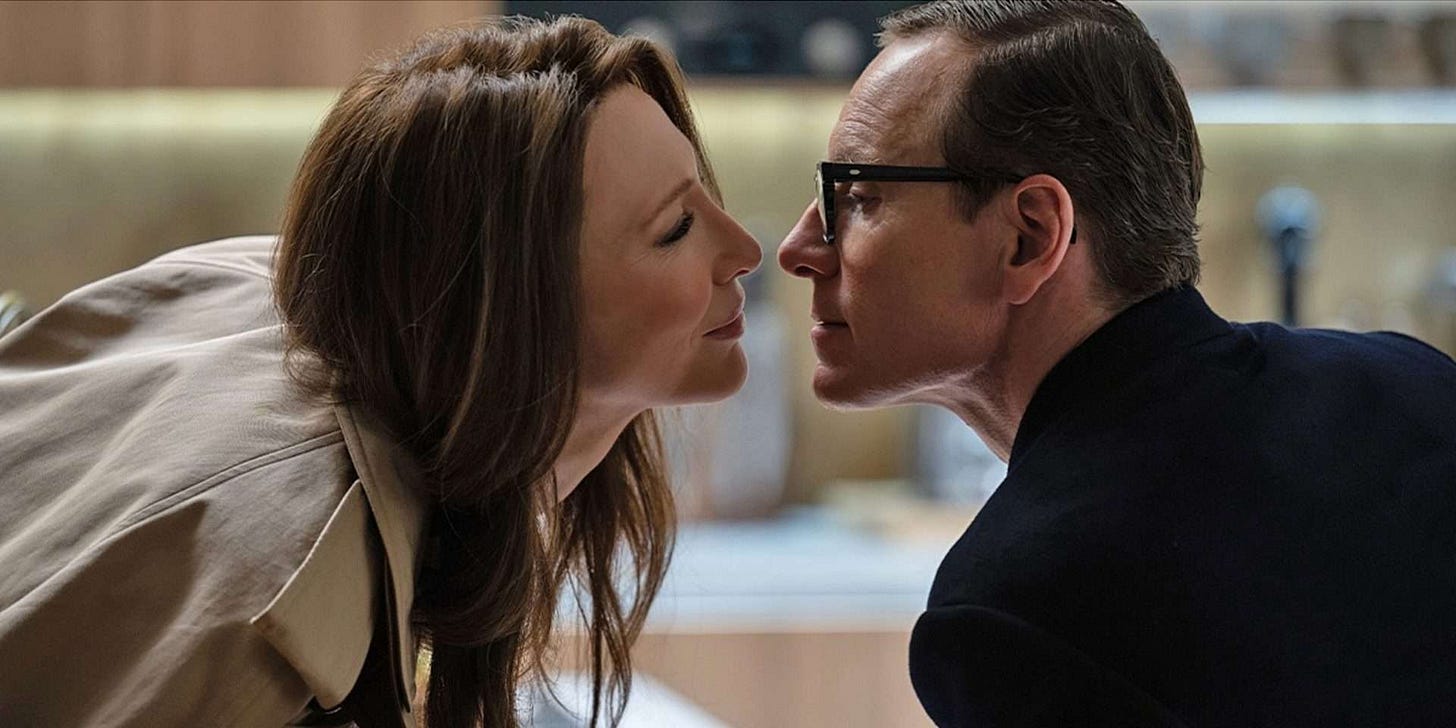
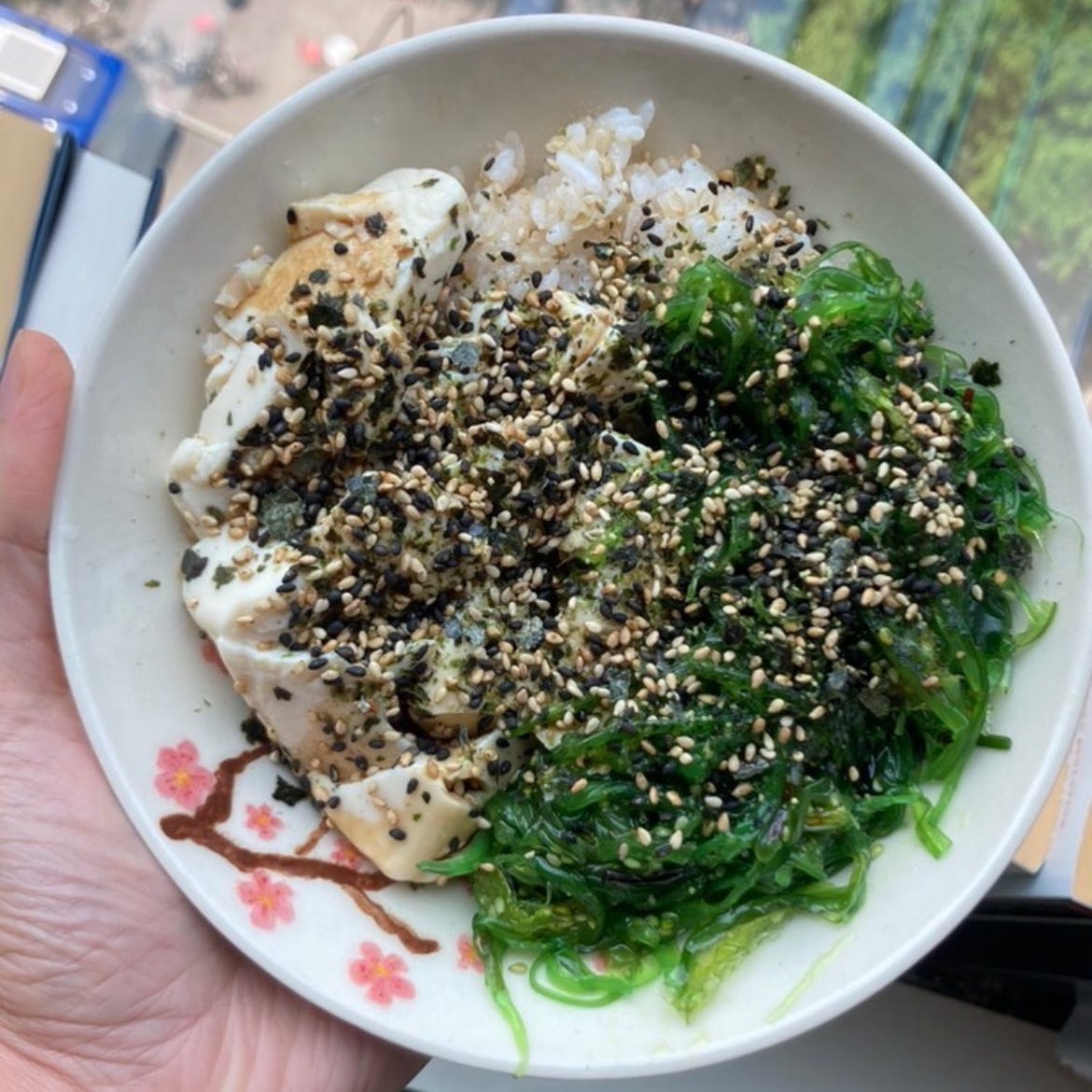

I also recently watched Black Bag, as soon as it felt like it was landing too stylishly it would careen back to character, but also, the point of those two is there’s always a role to play, a sheen to exude. Did you watch the American version of The Agency? Also Fassbender, also spy.
Agatha Christie for the win! So great.